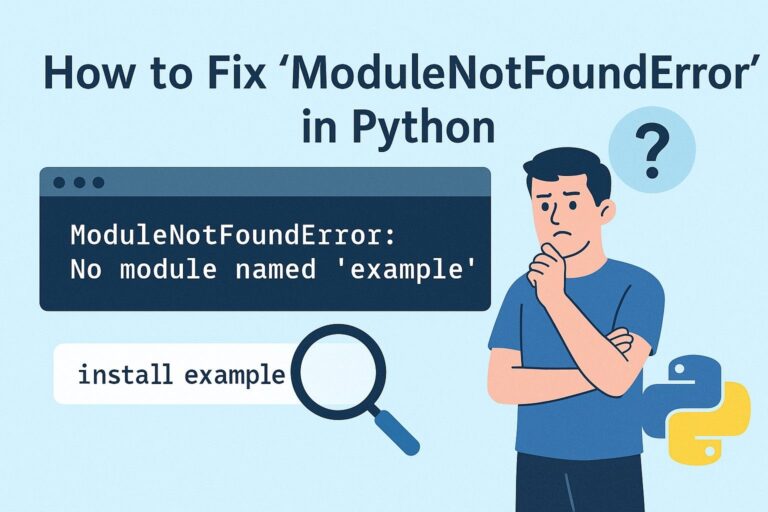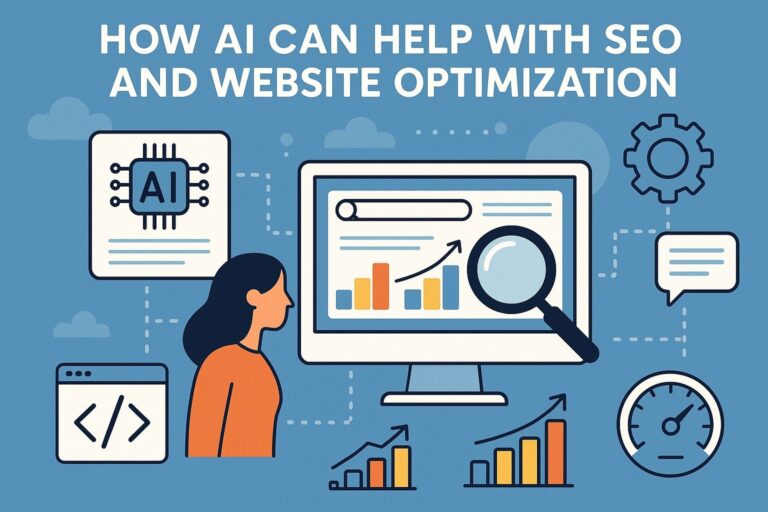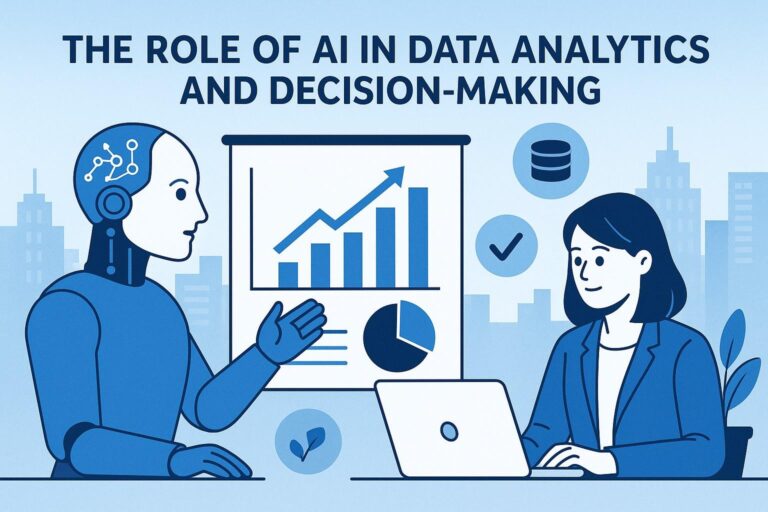
Artificial Intelligence (AI) is transforming industries such as healthcare, finance, transportation, logistics, education, and e-commerce. With automation and intelligent systems becoming a strategic focus for companies, there is a rapidly growing demand for AI talent.
If you already know Python, you have a significant head start. Python is the most widely used language in AI due to its readability, simplicity, and robust ecosystem of AI and machine learning libraries. However, knowing Python alone is not enough—you must apply it effectively within the AI landscape.
This guide provides a detailed, step-by-step roadmap to help you start a career in AI using your Python skills.
1. Strengthen Your Python Fundamentals
To use Python for AI development effectively, you must have a strong grasp of the language’s core features. Mastering the basics ensures that you can write efficient, maintainable, and scalable AI code.
Core Topics to Master:
- Variables, data types, and operators
- Control flow:
if,for,while,break,continue - Functions, arguments, return values
- Object-oriented programming: classes, inheritance, polymorphism
- Functional programming: lambda functions,
map,filter,reduce - List comprehensions and dictionary comprehensions
- Exception handling:
try,except,finally - Working with files: reading, writing, parsing data
- Modules and packages
- Virtual environments (
venv,pipenv,conda)
Recommended Resources:
- Python Official Documentation
- Real Python tutorials
- “Automate the Boring Stuff with Python” by Al Sweigart
- Python Crash Course by Eric Matthes
2. Learn the Core Concepts of AI and Machine Learning
To build intelligent systems, you must understand the theoretical foundations that drive them. Begin with an overview of AI, then dive deeper into machine learning and its subfields.
Key Concepts:
- Artificial Intelligence (AI): Systems that simulate human intelligence
- Machine Learning (ML): Algorithms that learn from data
- Supervised Learning: Classification and regression
- Unsupervised Learning: Clustering, dimensionality reduction
- Reinforcement Learning: Learning through reward feedback
- Deep Learning: Neural networks with multiple layers
Important Topics to Understand:
- Training vs testing vs validation sets
- Overfitting and underfitting
- Bias-variance tradeoff
- Evaluation metrics: accuracy, precision, recall, F1-score, ROC AUC
- Confusion matrix interpretation
Mathematics You Should Know:
- Linear algebra: vectors, matrices, matrix multiplication
- Probability and statistics: distributions, hypothesis testing
- Calculus: derivatives, gradients, optimization
- Discrete math and logic (for algorithm design)
Learning Resources:
- “Machine Learning” by Andrew Ng (Coursera)
- “Deep Learning Specialization” (DeepLearning.AI)
- Khan Academy for math prerequisites
3. Master Essential Python Libraries and Frameworks
Python has an extensive ecosystem of libraries that power AI systems. Start by learning core libraries used across data science and machine learning workflows.
Libraries to Focus On:
| Category | Libraries |
|---|---|
| Data Manipulation | pandas, numpy |
| Data Visualization | matplotlib, seaborn, plotly, bokeh |
| Machine Learning | scikit-learn, xgboost, lightgbm, catboost |
| Deep Learning | TensorFlow, Keras, PyTorch |
| Natural Language Processing | nltk, spaCy, transformers (Hugging Face) |
| Computer Vision | OpenCV, torchvision, Pillow |
| Model Deployment | Flask, FastAPI, Streamlit, Gradio |
| Data Versioning & ML Ops | DVC, MLflow, Weights & Biases |
Tip: Choose either PyTorch or TensorFlow/Keras and build deep expertise in one before exploring the other.
4. Build Practical, Portfolio-Worthy AI Projects
The best way to learn AI is by building. Choose real-world problems, use open datasets, and showcase your problem-solving skills.
Project Ideas by Domain:
Machine Learning:
- House price prediction using regression
- Customer churn prediction
- Fraud detection model
Natural Language Processing (NLP):
- Sentiment analysis using BERT
- Resume keyword extractor
- Text summarizer or headline generator
Computer Vision:
- Handwritten digit recognition (MNIST)
- Face mask detector
- Object detection using YOLO
Recommender Systems:
- Movie or product recommendation engine
- Personalized news feed
AI Tools:
- Chatbot using
spaCyor fine-tunedGPT-2 - AI resume screener for recruiters
Project Best Practices:
- Use version control with Git and GitHub
- Write clean, modular, and reusable code
- Document your project with a
README.md, code comments, and requirements.txt - Use Jupyter notebooks for demonstrations and explanations
- Include evaluation metrics and model performance visualizations
5. Learn the Basics of Model Deployment
Knowing how to train models is only half the story—deploying models is essential for real-world usage. This will significantly boost your employability.
Key Deployment Topics:
- Creating REST APIs using
FlaskorFastAPI - Saving and loading models with
joblib,pickle, ortorch.save - Hosting models using
Render,Hugging Face Spaces, orStreamlit - Using Docker to containerize ML applications
- CI/CD basics for ML pipelines
- Using cloud services: AWS SageMaker, Google Vertex AI, Azure ML
Bonus Skills:
- Front-end integration using Streamlit or Gradio
- Monitoring model performance in production
6. Build and Showcase an AI Portfolio
Your portfolio is your credibility as an aspiring AI professional. It should highlight your ability to solve real problems, write clean code, and explain your work clearly.
What to Include:
- 3 to 5 well-documented AI/ML projects
- GitHub repositories with descriptive READMEs, proper folder structures, and commit history
- A technical blog or Medium account (optional) where you write about what you build
- Jupyter notebooks that explain your experiments, visualizations, and performance analysis
- Demo links using Hugging Face Spaces, Streamlit, or Heroku
7. Understand the AI Career Paths Available
With Python and AI skills, you can explore a variety of roles depending on your interests:
| Role | Primary Focus |
|---|---|
| Machine Learning Engineer | Build and optimize ML models for production |
| AI/ML Research Assistant | Assist with research prototypes in academia or industry |
| Data Scientist | Analyze data, build models, generate insights |
| NLP Engineer | Work with textual data and language models |
| Computer Vision Engineer | Work on image, video, or facial recognition systems |
| AI Developer/Engineer | Build intelligent applications using AI APIs and frameworks |
| MLOps Engineer | Maintain and monitor ML pipelines in production |
Tip: Identify which role aligns best with your skills and career goals, then tailor your learning and projects accordingly.
8. Apply for Entry-Level AI Jobs and Internships
Once you have a solid foundation, start applying for roles that match your experience level.
Common Entry-Level Titles:
- Junior Machine Learning Engineer
- AI Intern
- Data Science Intern or Associate
- Applied ML Engineer (Entry-Level)
- Research Assistant (AI/ML)
Where to Apply:
- AngelList (startups)
- ai-jobs.net
- huggingface.co/careers
- Indeed, Wellfound, Hirable, Remotive
- University and corporate internship portals
Application Tips:
- Customize your resume for each role
- Highlight Python, data science libraries, and completed AI projects
- Include GitHub links and project demos
- Prepare for technical interviews: coding questions + ML concepts
9. Stay Updated and Continue Learning
AI is a fast-moving field. Stay current and keep learning through community engagement, reading, and continuous upskilling.
Ways to Stay Ahead:
- Follow AI leaders and researchers on LinkedIn, Twitter, and GitHub
- Join online communities like r/MachineLearning, Discord AI groups, or Slack forums
- Read AI papers from arXiv.org or paperswithcode.com
- Subscribe to newsletters: The Batch (deeplearning.ai), Import AI, Machine Learning Weekly
Recommended Advanced Courses:
- fast.ai’s Practical Deep Learning for Coders
- Deep Learning Specialization by DeepLearning.AI
- Hugging Face NLP Course
- Machine Learning Engineering for Production (MLOps specialization)
Final Thoughts
You do not need a master’s degree or PhD to start a career in AI. If you are proficient in Python, understand the foundations of machine learning, and can build and explain projects, you are ready to pursue entry-level AI roles.
The key is not just to learn, but to build, share, and communicate. A strong portfolio, real-world projects, and the ability to explain your work will help you stand out in a growing and competitive field.

I’m Shreyash Mhashilkar, an IT professional who loves building user-friendly, scalable digital solutions. Outside of coding, I enjoy researching new places, learning about different cultures, and exploring how technology shapes the way we live and travel. I share my experiences and discoveries to help others explore new places, cultures, and ideas with curiosity and enthusiasm.






